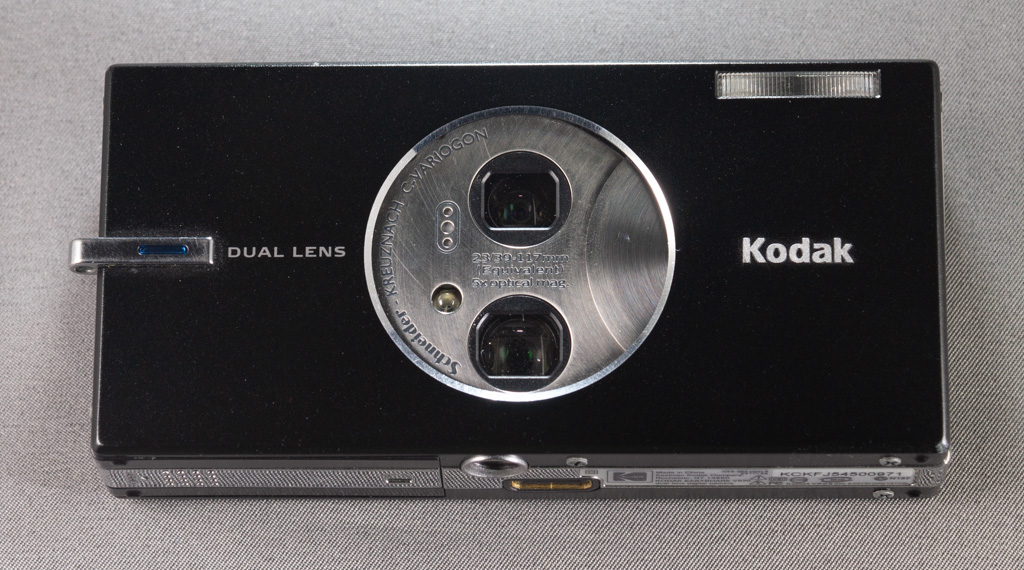I realize it may be click-baitey to call any camera a “Digital Lomo.” But I’m quite serious and not at all baiting for clicks. (What good would they do me, anyway? There’s no advertising on my site. It generates zero dollars.)
For reasons I’ll explain I think the released-in-2006 Kodak V570 meets my criteria for being a credible digital version of a Lomo camera. Before I dig into the camera itself, let me expand on what I think it means to be a “digital Lomo.”
The Spirit of the LC-A, only Digital
I’ve seen any number of cameras offered up as a “digital Lomo” over the years. Typically they’re low-end early-generation digicams from the 2000s, ones actually intended as toys for children or toy-style cameras that are specifically designed to have random defects or other abnormalities associated with Lomography’s plastic cameras.
However, as I’m invoking the notion of a “digital Lomo” I’m actually referring back to the camera that started it all, the Lomo LC-A, which a team of Austrians rediscovered in post-Soviet Russia during the 1990s. Intended as a people’s point-and-shoot and modeled after a Japanese OEM model from the 80s, the LC-A is an actually serious camera. But it stood out in the 1990s amid inexpensive auto-everything plastic SLRs and point-and-shoots dedicated to making sure you got consistent snapshots without having to know anything about photography.
By contrast, the LC-A had manual zone focusing – where you guess how far away your subject is – combined with an autoexposure that would choose long shutter speeds in low light, since it didn’t have a built-in (and default) flash like pretty much every other camera on the shelves. Along with a lens prone to vignetting, the earlier Lomographers discovered a tool that often resulted in dreamy, artfully blurred and idiosyncratic images that stood out from the flat, red-eyed flash-always-on photos from your typical NikonCanonOlympusPentax from Target or Ritz Photo.
Importantly, as long as you had the lens door open and film inside, the LC-A would take a picture, no matter how bad the focus or light. It got out of your way and let you be spontaneous in situations where your typical point-and-shoot would hesitate, flash warning lights, or refuse to take a picture altogether.
That’s the spirit by which I judge a camera to be a “digital Lomo.”
Memories of the Dual Lens Kodak V570
I distinctly remember when the Kodak V570 came out in the mid-2000s. Photo magazines praised its dual lens configuration – American Photo named it “Camera of the Year” for 2006 – which gave you one wide-angle optic (23mm equivalent) and one more conventional 3x zoom lens similar to those seen in most other digicams of the time, but notable for being a folding optic that did not protrude from the camera body. The camera itself had a distinctive look, completely rectangular with no soft edges, the lenses hid behind a sliding brushed steel cover.
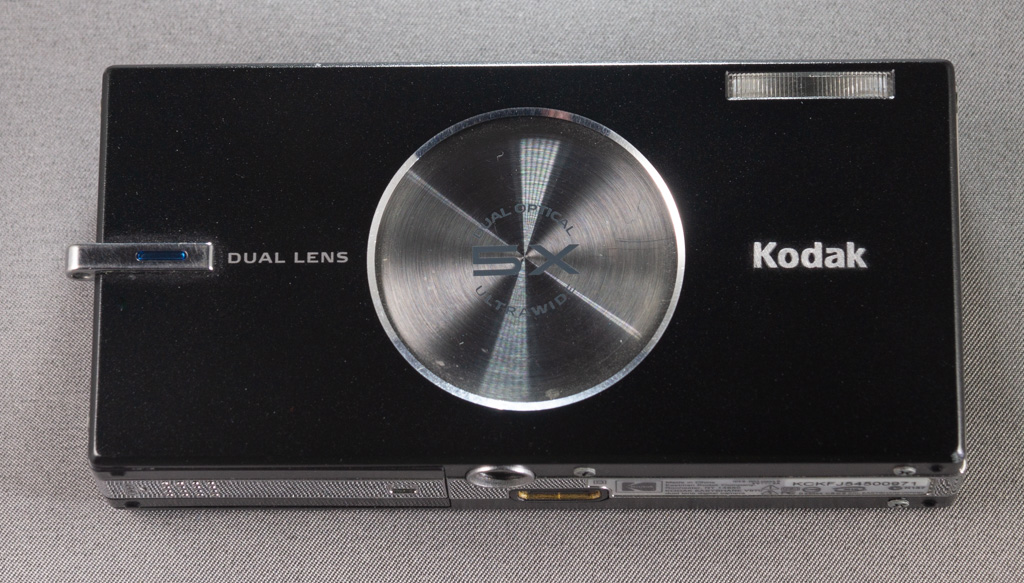
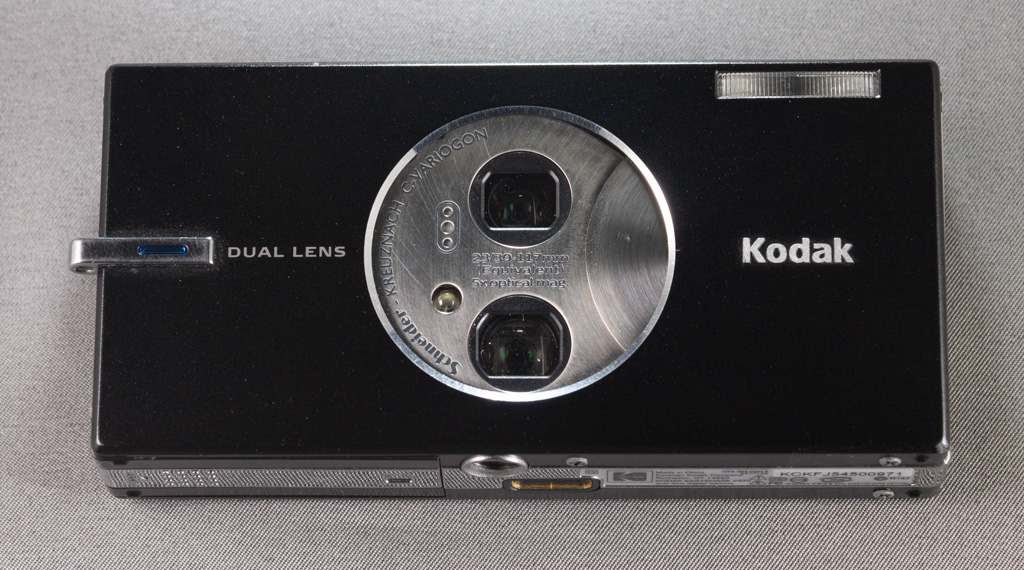
Though digicams with such a wide lens have become common (I love this feature of my Panasonic ZS40), the typical mid–2000s digicam rarely went wider than a 35mm equivalent. The f/2.8 maximum aperture on the wide lens also helped let in a little more light to help keep your ISOs low, since most digicams turned in pretty dismal performance above an ISO of 400.
I found myself smitten by this oddball of a camera, but with a retail price of $399.95 I wasn’t ready to spring for one, especially since I had only purchased my $300 Olympus Stylus 800 a year before the V570 came out. The Oly was truly strong performer for the mid–2000s, and I didn’t have the budget to buy a new camera every year. Plus, the Kodak offered only five megapixels, which seemed like a step down from the Stylus’ eight.
After a while the Kodak faded from memory, though I’d keep my eyes peeled for one as I cruised thrift stores and used electronics. But I never encountered one.
Kodak V570 on My Mind, I Don’t Know Why
For reasons I don’t know, a couple months ago the V570 came to mind. So I did what any reasonable person would do: I checked Ebay. Of course, I found what I was looking for, usually less than a hundred bucks. I eventually settled on one advertised as “tested” with its original dock included. These docks were a defining feature of Kodak’s EasyShare digital cameras, supposedly making it easier to connect to your computer and charge at the same time.
When the V570 arrived I was struck by just how tiny it is. Sure, I saw the specs of 3.98″ x 1.97″ x 0.79″ (101mm x 50mm x 20 mm), but I didn’t stop to really imagine it. The front face is just a little bit bigger longer than a credit card, and it’s only a little thicker than your typical smartphone. Truly pocketable.
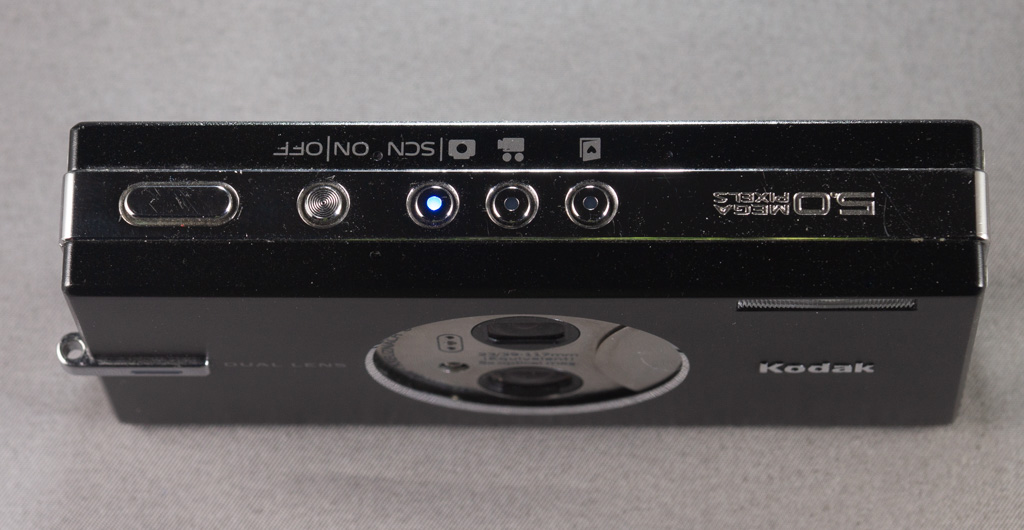
Ergonomics, though, have been sacrificed for style. There’s nothing approaching a grip, and all the buttons, save the shutter, are tiny. But one doesn’t buy a “digital Lomo” for the ergonomics, does one?
I was surprised to find the original battery still held a charge, and went out to shoot on a warm, sunny September Saturday. I had a ball.
Using the Kodak V570
One thing I noted in reviews from its release is that the wide-angle lens is fixed focus. Ordinarily one might consider the lack of autofocus – or manual focus for that matter – to be a real downside. But in practice the depth-of-field for such a wide lens with a tiny digicam sensor is pretty endless. Sure, you’ll pull off no pseudo-arty depth-of-field tricks where everything but a thin pane of the image is in focus, and certainly there’s no bokeh. That was never the domain of digicams, anyway.
More importantly, the lack of autofocus means there’s no waiting for the camera to focus. Zoom all the way out to 23mm and this little Kodak is ready to shoot immediately, over-and-over. Daylight, low light, it doesn’t matter. Just point and shoot, just like – you guessed it – a Lomo LC-A.
With such tiny dimensions the V570 just begs to be slipped into a jacket or jeans pocket and to be tossed about for all matter of “don’t think, just shoot“ fun. Want something to be out of focus? Just get closer than 28” (70cm). Want it in focus? Back off.

As was common in its time, the Kodak has no manual controls, just an array of scene modes that you can safely ignore. There’s not much in the way of image control either, just “natural color,” “low color,” “black & white,” and “sepia.” I say just leave it on “natural” and go to it.
In the same ways the early Lomographers felt freed by the LC-As lack of controls and willingness to shoot regardless of focus or exposure condition, shooting with the Kodak V570 using its wide lens is an exercise in being footloose and fancy free like very few digital cameras offer.
If the shooting experience is Lomo-like, what are the photos like, you might inquire. The answer is: fine. The quality is pretty much what you’d expect from a 14 year-old, five megapixel digicam. Keep in mind that it was designed to be a somewhat premium little camera, not a toy or an entry-level model. In fact, the photos are actually quite sharp and clean, especially in daylight. When you pixel-peep you don’t get the kind of smeared details that I’ve seen in plenty of digicams with higher megapixel counts. It may only have five megapixels, but it makes the most of every one.
That said, mid–2000s sensors had their limits. Dynamic range isn’t great, and it’s pretty easy to blow out highlights. At higher ISOs you see the digital noise rather than aggressive noise reduction. It’s a look I prefer, and find to be more like high ISO film grain. These add up to more Lomo-ness (though not significantly more than any other digital camera of its era).
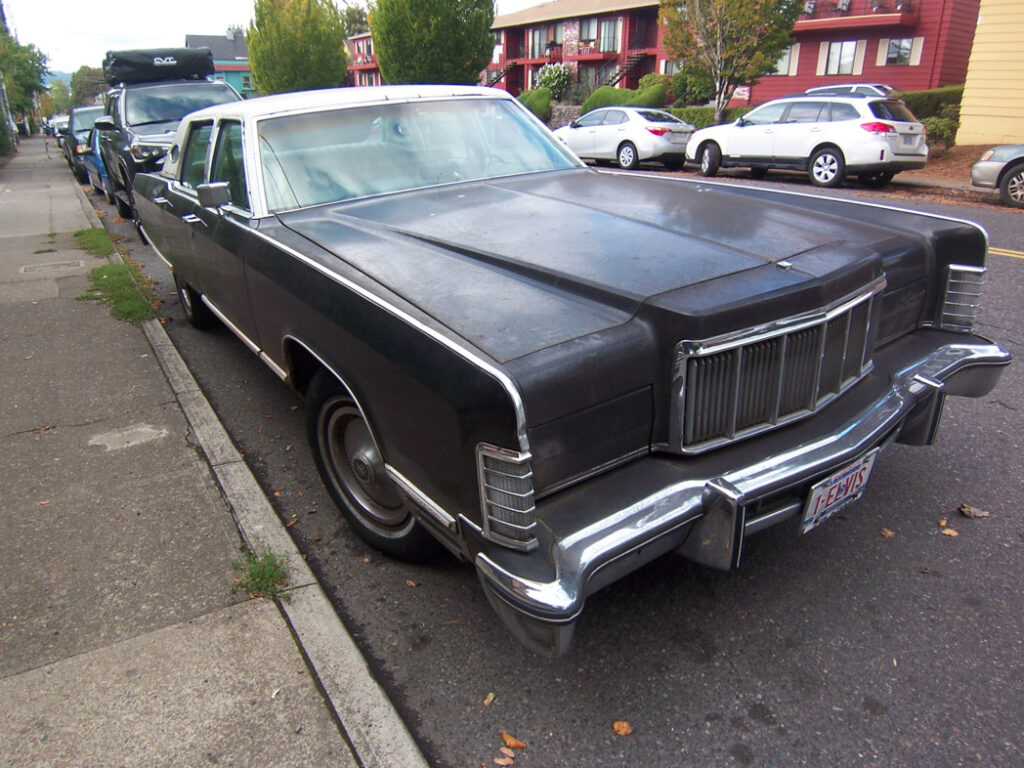
The wide angle lens has a fair amount of distortion – as is common with this type of optic – which the camera compensates for automatically. Thankfully, you can turn this off to retain this quirkiness. Also, with such a wide lens, it’s easy to accidentally get your finger in frame if you’re not paying close attention to the screen.
Walking around on the street the V570 pretty much disappears in your hand and becomes mostly inconspicuous unless you’re holding it right in front of your face. This makes it a fun little street shooter or party camera (if we ever go to parties again). Just like a Lomo LC-A.
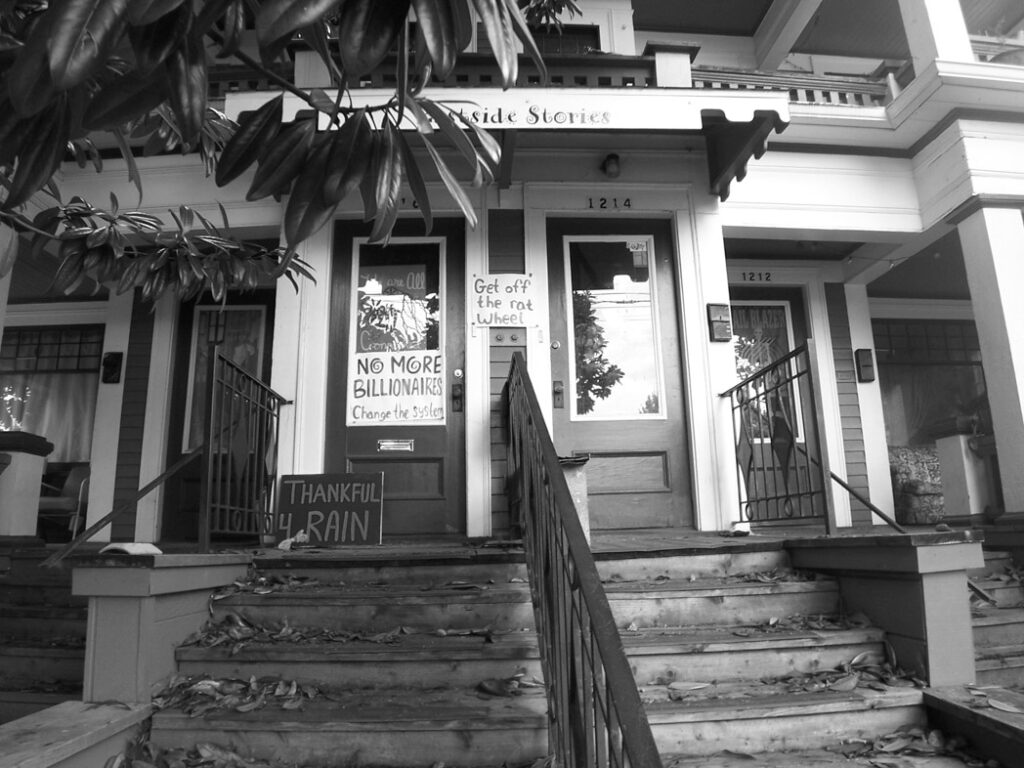
2000s Digicams: the Next Big Thing?
A new generation of photographers getting into film combined with a fixed supply of vintage film cameras means that even pretty boring 35mm point-and-shoots from the 80s and 90s are getting bid up to often absurd prices. And the classics are going for multiples of their original retail prices.
In this environment I think the time is ripe for early digicams to get their day in the sun as the next fun, lo-fi art camera. Every Goodwill I’ve been to has been dirty with piles of Nikon, Canon, Olympus and Fuji digicams tossed aside in favor of the more convenient smartphone camera. Who knows which one of these will become your next “digital Lomo.”
Buying a Kodak V570
If you’re interested in trying the Kodak V570, they’re out there, but were never as common or popular as a Canon PowerShot or Digital Elph. Like it was for me, Ebay is probably your best bet, and all the usual caveats apply. You’ll be lucky if a 14 year-old battery still works. Mine did, and was good for about an hour of use. But I found that it didn’t hold a charge for more than a day or so, even with the camera powered off. Luckily, a whole range of Kodak digicams used the same battery, so new third-party replacements are easy to find inexpensively.
Kodak also made two other dual-lens models. The V610 has two zoom lenses on order to provide a full 10x zoom in the same tiny body. But it lacks the wide angle fixed lens, which is what makes the V570 stand out for me.
The V705 is a 7.1 megapixel update to the V570. I don’t know that the extra 2 megapixels makes any difference, or if the image quality is any different beyond that. I guess the ISO goes all the way up to 1000 if that’s useful to you. Otherwise I don’t see a reason to choose the V705 over the V570, nor vice-versa. Search for both and buy the first one you find at a price you’re willing to pay.
I consider cameras like these to be fun toys, and I adjust my budget accordingly. Just like I’m unwilling to shell out several hundred for a cult 90s point-and-shoot that once had a new street price of about $160, I wouldn’t recommend paying more than 50 bucks for something like this. My hope is that you’re luckier than I, and encounter one abandoned at a thrift shop or garage sale.
